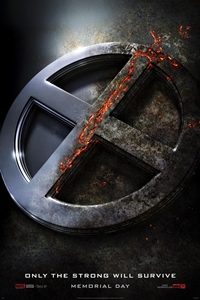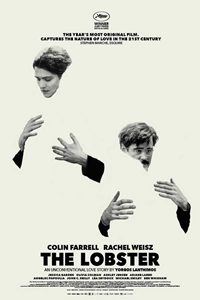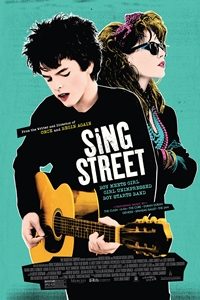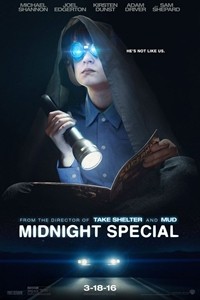 X-Men: Apocalypse
X-Men: Apocalypse
Dir: Bryan Singer
Starring: James McAvoy, Michael Fassbender, Jennifer Lawrence, Nicholas Hoult, Oscar Isaac, Rose Byrne, Evan Peters, Josh Helman, Sophie Turner, Tye Sheridan, Lucas Till, Kodi Smit-McPhee, and Olivia Munn
Director Bryan Singer is one of the early creators responsible for the superhero movement in filmmaking, an explosion that currently floods the market. Way back in 2000 Mr. Singer directed "X-Men" with exceptional success, bringing together a team of mutant heroes with extraordinary powers that includes the adamantium clawed fan favorite Wolverine, still played by Hugh Jackman today. The franchise has had its share of ups and downs. Still, even at the low points fans were still lining up for the next installment in the series. Just when it seemed like everything was heading towards a dead-end, "X-Men: First Class" retooled the story and recast the film bringing a new aspect to the franchise with fresh faces mixing in with franchise familiar ones. Building upon this success "X-Men: Days of Future Past" was released and crafted one of the best films in the history of the franchise.
The X-Men have a villain to fight against, the ancient mutant named En Sabah Nur, otherwise known as Apocalypse, played in heavy make-up by Oscar Isaac. Apocalypse has been trapped underneath a pyramid but has been released; his mission is to annihilate the world with an army of powerful mutants, one of which is Magneto played again by Michael Fassbender. Magneto tried to live a peaceful life in Poland, with a wife and child, but a heartbreaking tragedy turns Magneto hate-filled once again. Charles Xavier (James McAvoy) is running a school for gifted students, taking in a young Jean Grey (Sophie Turner) and Scott “Cyclops” Summers (Tye Sheridan), both characters you will remember from the first movies. Apocalypse recruits his team of extraordinary individuals to destroy the world and it’s up to the X-Men to stop them.
There is a whole lot of movie going on here but with a running time of 144 minutes there is ample time to tell this extensive tale. Unfortunately filling the time with a good story and engaging characters doesn’t seem to have been high on the list for the creative team here. “X-Men: Apocalypse” isn’t terrible, in fact there are quite a few moments that are actually very good. There is another entertaining slow-motion scene with Quicksilver (Evan Peters), the connections to the original material and the groundwork established through the entire franchise make for some interesting moments, and there is even a small cameo from a franchise favorite that sets into motion a really exciting story arc. So what’s the problem? Aside from the final minutes of the film and an occasional moment from Apocalypse, we’ve seen this all before. As mentioned before Quicksilver steals the show with another slow motion scene, Magneto returns to Auschwitz in an almost pointless scene, and a majority of the dramatic action moments move and operate in the same way that it always has. It’s old material just repackaged in a new movie. It may be stated by some keen film fans out there that this method is what most films do anyway, remake, reimagine, and repackage properties. However there are moments in this film where the only new aspect is a new character.
Still, there are moments when the film simply functions as a vehicle of pure entertainment. Most of this sentiment is due to the efforts of the talented cast; even the small characters seem to fit their role especially well. James McAvoy and Michael Fassbender are again good; they have built chemistry over these films that displays their character’s admiration and disdain for one another, similarly to the former two actors playing these roles Patrick Stewart and Ian McKellan. Newcomers to the franchise Sophie Turner and Tye Sheridan are good also, even when they get lost in the mix of characters on display here. Unfortunately Olivia Munn, playing Psylocke, is reduced to standing around and making her best superhero pose behind Apocalypse.
“X-Men: Apocalypse” has a few high points that are sure to entertain and excite fans of the franchise, however it also has quite a few low points. At times it feels like a really long and cluttered setup to another story coming in the future, hopefully the next outing will spend more time creating a narrative that makes the viewer care about these characters again.
Monte’s Rating
2.75 out of 5.00

 ‘The Nice Guys’ takes the buddy-cop genre to another level
By Kaely Monahan
‘The Nice Guys’ takes the buddy-cop genre to another level
By Kaely Monahan Reach out and grab ‘The Lobster’, the best film of 2016 (so far)
Reach out and grab ‘The Lobster’, the best film of 2016 (so far)
 ‘Neighbors 2: Sorority Rising’ hosts a less funny, more vulgar block party
‘Neighbors 2: Sorority Rising’ hosts a less funny, more vulgar block party
 ‘A Bigger Splash’ does not reach its thirsty audience
‘A Bigger Splash’ does not reach its thirsty audience
 “Patel plus Irons equals a gem in ‘The Man Who Knew Infinity’”
“Patel plus Irons equals a gem in ‘The Man Who Knew Infinity’”
 Captain America: Civil War
Captain America: Civil War
 “’Sing Street’ is a wonderful ‘80s music, coming-of-age road trip”
“’Sing Street’ is a wonderful ‘80s music, coming-of-age road trip”
 “Sarandon extends a warm invitation to ‘The Meddler’”
“Sarandon extends a warm invitation to ‘The Meddler’”
 “’Papa: Hemingway in Cuba’ is important but not quite a cinematic page-turner”
“’Papa: Hemingway in Cuba’ is important but not quite a cinematic page-turner”
 You don’t have to be a crazy cat lady to enjoy Keanu
By Kaely Monahan
You don’t have to be a crazy cat lady to enjoy Keanu
By Kaely Monahan Green Room
Green Room
 “Shannon and Spacey deliver a fun history lesson in ‘Elvis & Nixon’”
“Shannon and Spacey deliver a fun history lesson in ‘Elvis & Nixon’”
 Richard Linklater’s newest film Everybody Wants Some!! has been advertised as a “spiritual sequel” to his 1993 film Dazed and Confused. However, it was clear that revisiting the 1970s high school and graduation is not what this film is about.
Richard Linklater’s newest film Everybody Wants Some!! has been advertised as a “spiritual sequel” to his 1993 film Dazed and Confused. However, it was clear that revisiting the 1970s high school and graduation is not what this film is about.
 Midnight Special
Midnight Special
 ‘Krisha’ is a memorable Thanksgiving movie for nontraditional reasons
‘Krisha’ is a memorable Thanksgiving movie for nontraditional reasons
 Batman v. Superman: Dawn of Justice
Batman v. Superman: Dawn of Justice
 Plummer’s performance makes ‘Remember’ a thriller that you won’t forget
Plummer’s performance makes ‘Remember’ a thriller that you won’t forget








